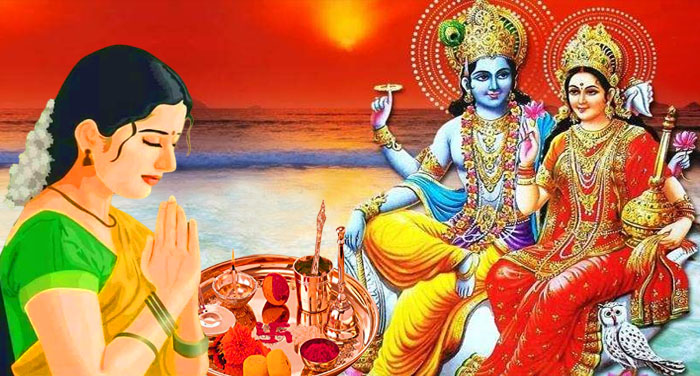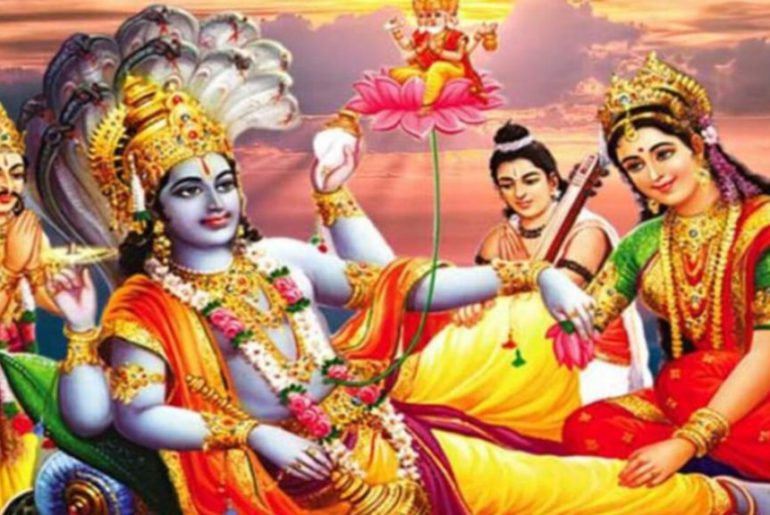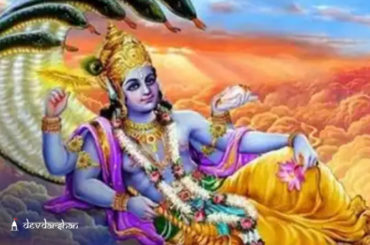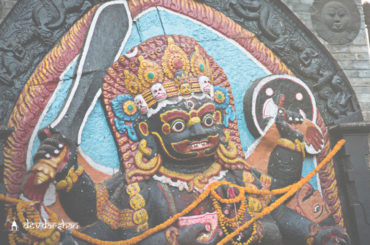Kamada Ekadashi is celebrated on the Ekadashi (11th day) of Shukla Paksha in the month of Chaitra. Kamada Ekadashi holds great religious importance in Hinduism. Lord Vishnu and Maa Lakshmi are worshiped on this day. According to the scriptures, fasting on Kaamada Ekadashi liberates a person from ‘Brahmahatya’ and all other sins. By observing this fast, the devotees can get the result that is equal to a thousand years of penance.
Date and Timings

In 2023, Kamada Ekadashi falls on Saturday, April 1.
The Shubh Muhurat for Kamada Ekadashi 2023 Vrat starts at 4.30 a.m on 1st April 2023 and ends at 4:19 a.m on 2nd April. During this auspicious time, devotees can worship Lord Vishnu and perform all the rituals.
- Ekadashi Tithi Begins: 01:58 AM on April 01, 2023
- Ekadashi Tithi Ends: 04:19 AM on April 02, 2023
- Parana Tithi (breaking fast) of Ekadashi: April 02 between 01:40 p.m to 04:10 p.m
Significance of Kamada Ekadashi

Ekadashi fast is observed every month but Kamada Ekadashi has special significance in Hinduism. As per religious beliefs, all types of auspicious works should be conducted on Kamada Ekadashi. Kamada Ekadashi is also auspicious for performing pujas related to new beginnings such as new business, buying of a new plot etc. Observing the fast helps to maintain peace and happiness in the house and the devotees also get rid of all doshas and sins they’ve done in their past life. According to scriptures, reading and listening to Ekadashi Vrat Katha on the day of Kamada Ekadashi is considered very auspicious.
Kamada Ekadashi Puja Rituals

- The devotees observing the Kaamada Ekadashi fast should get up early in the morning, have a bath and wear fresh clothes on the puja day.
- Then Arghya is offered to Lord Surya and Gangajal is sprinkled to sanctify all corners of the house. The puja place is cleaned properly and the idol of Lord Hari is installed.
- The puja begins by offering turmeric, akshat, oil lamp, incense sticks, sandalwood and flowers to the Lord and chanting some Mantras.
- Then Roli is applied to Lord Hari and the Aarti is done after reading the Ekadashi Vrat Katha.
- Then Bhog in the form of sweets, fruits and kheer are offered to the Lord. Tulsi or Basil leaf is an important component of the bhog since it’s believed that the Lord doesn’t accept the bhog without tulsi.
- The devotees also need to light a lamp and offer bhog in front of the tulsi plant in the evening. It’s believed that Lord Hari showers his blessings on his devotees only if Tulsi Maa is pleased.
- At the end of the puja the devotees should distribute the Prasad, feed some brahmins and perform some charity work.
Check out about various Online Puja and services provided by DevDarshan here and get your bookings done in one click. If you want to know more about Indian culture, Indian Temples, Pujas and festivals, then download the DevDarshan App. Don’t forget to share this blog if you liked it.
Also read: Chaitra Navratri 2022




